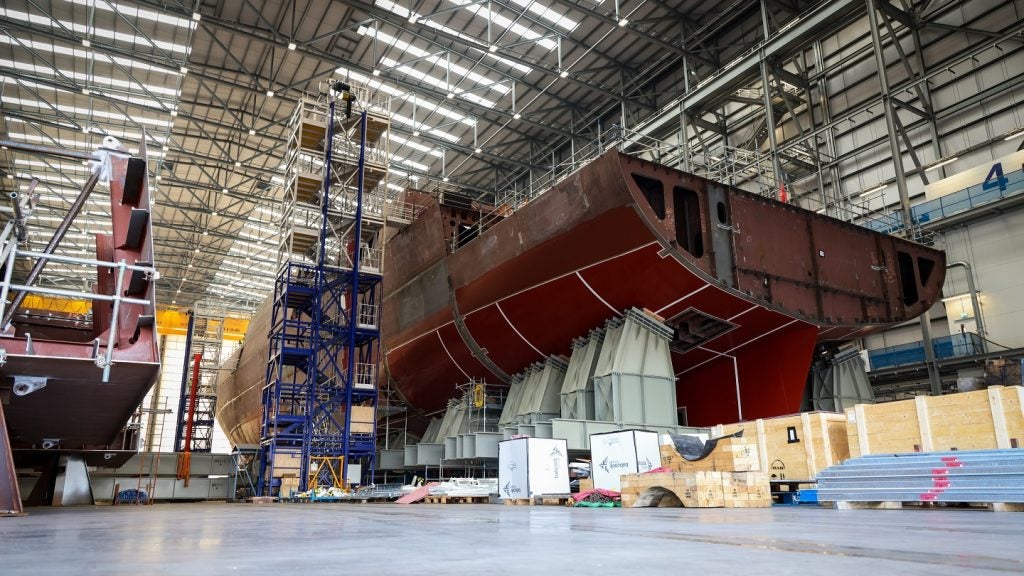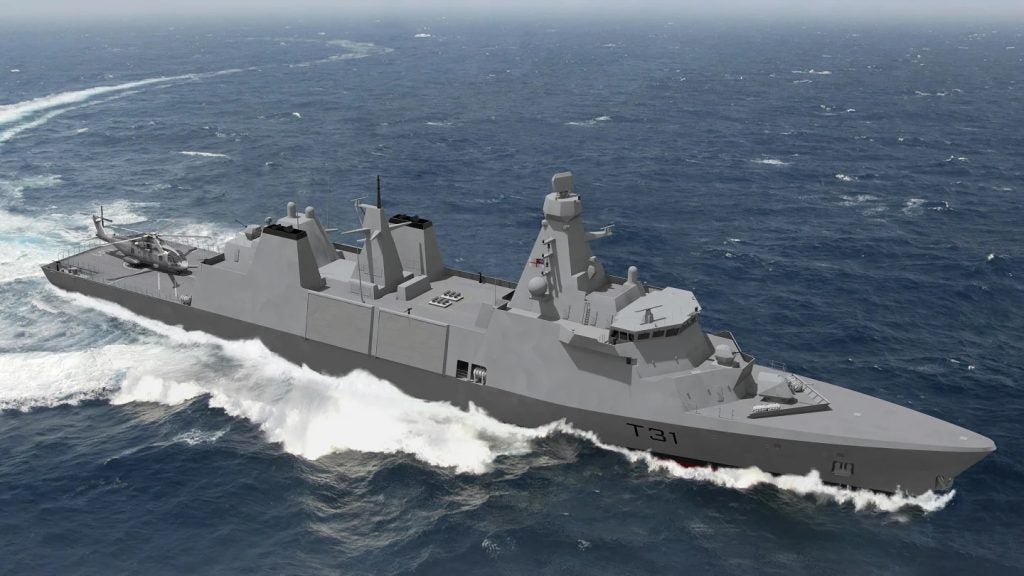The first of the main engines of HMS Active, the second of the five Type 31 frigates being built for the UK Royal Navy, was lifted into place after several weeks of preparation work, representing the latest step in the ongoing manufacture of the class.
In a social media post on 10 May, Babcock stated the Type 31 team at Rosyth, where all five Type 31 frigates are to be manufactured, had completed “a number of key activities on HMS Active”.
This included completion of hot work on the deck of the ship’s two engine rooms, followed by a four-week blast and paint cycle before the first of the main engines was lifted into place.
When contacted, Babcock declined to comment on the latest milestone in HMS Active’s build programme, although it March it had previously reported “good” progress on the vessel.
Once completed, each of the Type 31 frigates will draw power from four MTU 20V 8000 M71 engines, with each producing more than 8,000kW. In addition, four MTU 16V 2000 M41B generator sets will be used for the onboard power needs of each vessel, with each generator delivering more than 900kW of power.
The combined diesel-and-diesel configuration (CODAD) will emphasise reliability and cost effectiveness over more advanced but complex solutions, such as the Royal Navy’s Type 45 destroyer fleet’s integrated electric drive or the combined diesel and gas (CODAG) of the in-service Type 23 frigates.
Type 31 frigate HMS Active progresses to timeline
The development follows an earlier March report that confirmed that the first-in-class, HMS Venturer, had completed the ‘stern drop’ procedure, which saw the removal of support brackets from the aft end of the ship, allowing the stern to settle at its design position.
Taking place towards the end of March, the drop stern is a significant step as it positions the aft end of the ship and requires a high level of build maturity in the ship’s structure in order to be carried out.
The completion of the stern drop, which was performed with the help of ballast weights, enabled Babcock to start final positioning and welding of the stern tube and shaft support brackets, following by the shaft line installation itself, the company had told Naval Technology.
At the time, Babcock said that work was about to begin on the four-week blast and paint cycle in the ship’s engine rooms, in addition to outfitting. The announced completion this week broadly fits the expected timeline.

In February, when asked about the planned integration of the Mk 41 VLS into the Type 31 frigates, Babcock officials said that such procedures could be carried out during “capability insertion periods” after the vessels had been delivered, adding that it was key that any decision should not “disrupt the delivery”.
Capability insertion periods are undertaken around halfway through the ship’s initial service life, usually around 10-12 years.
The first Type 31 frigate, HMS Venturer, is expected to be launched later in 2024 and delivered by 2028, with the build of all five vessels expected to be completed the same year.









